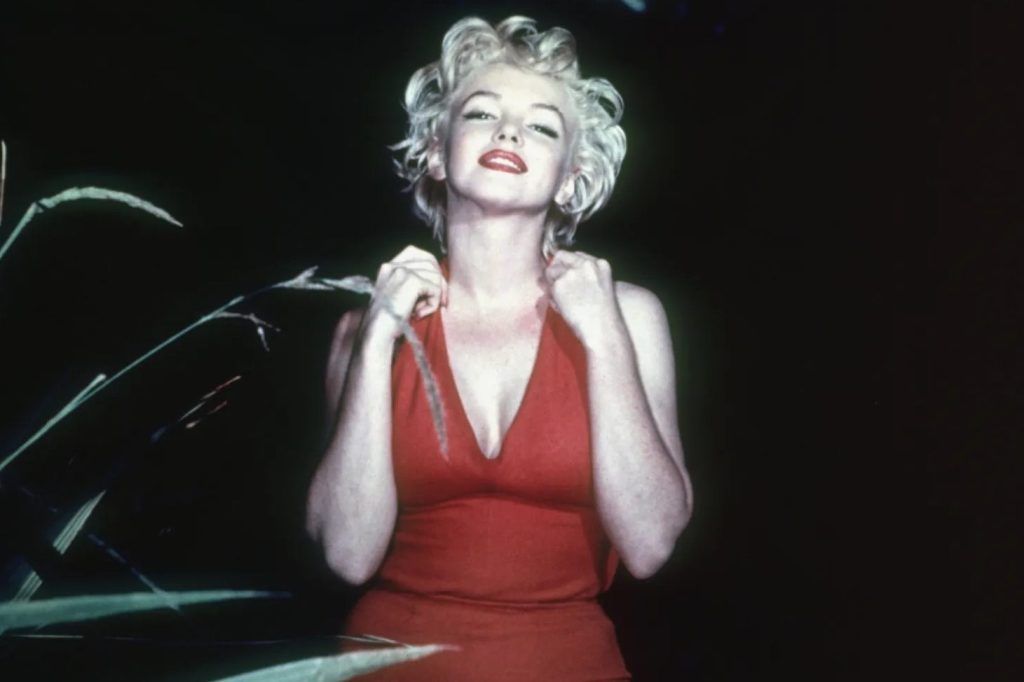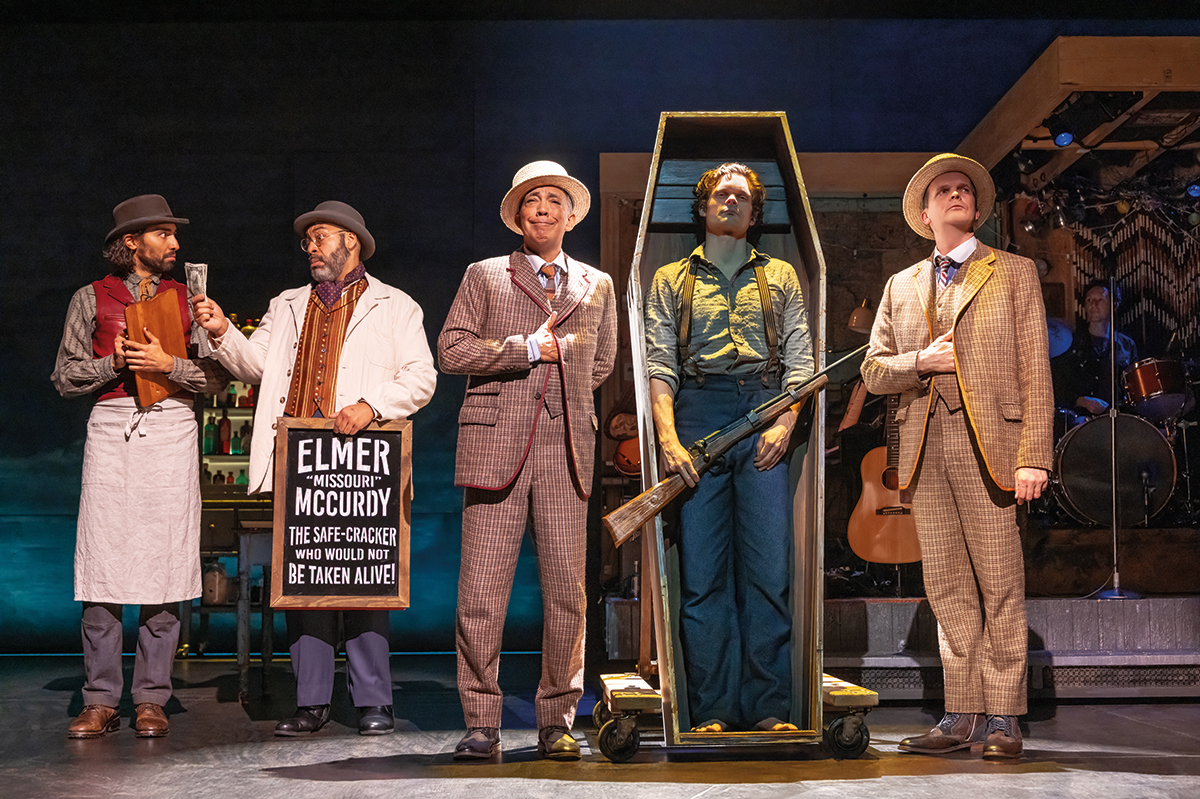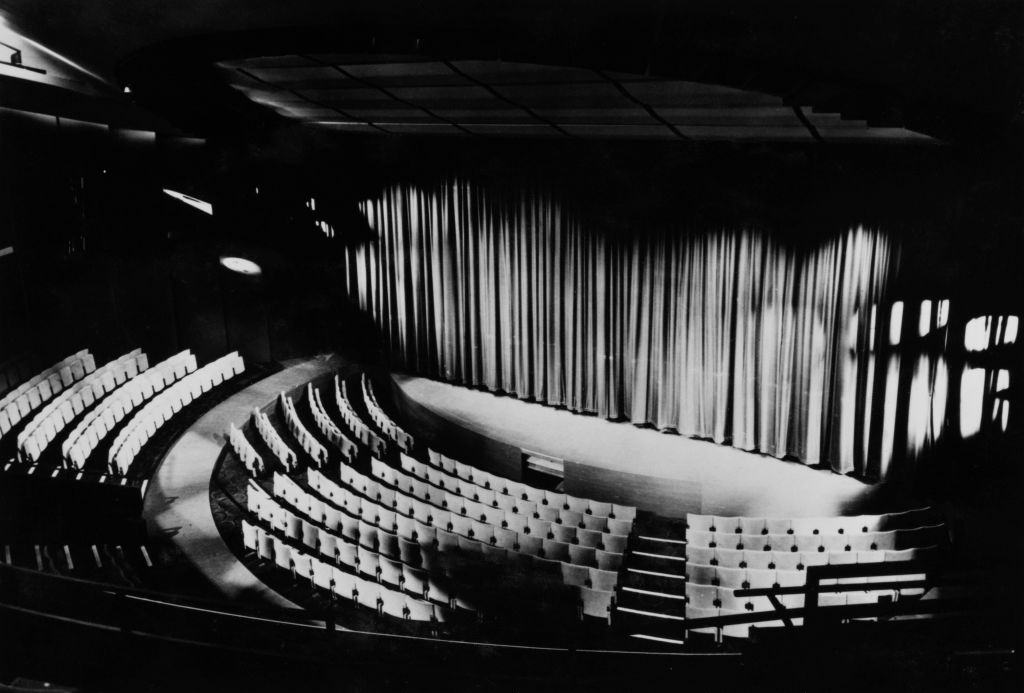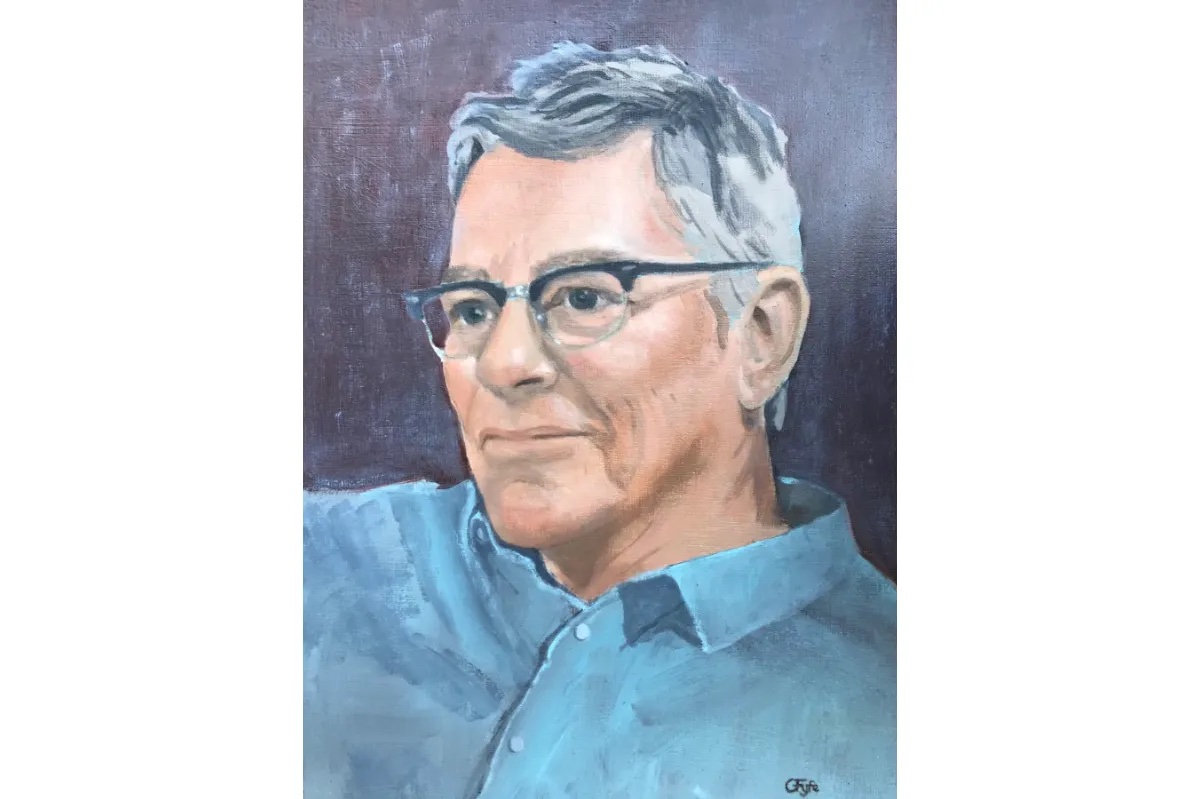What do we talk about when we talk about Marilyn Monroe? Sex, death and everything in between. Unlike other legendary film stars from Garbo to Bardot, Monroe has become (to use that awful and over-popular word) “iconic” — which is “problematic” in itself. Being recognizable as a hank of blonde hair and a white dress failing to preserve her dignity dehumanizes Marilyn — and we know that being treated as a “thing” contributed towards her terminal sorrow. We want to have our cheesecake and eat it, without adding the heavy weight of posthumous complicity in the death of this likable young woman — which is what Monroe was, beneath all the glamour and the pain.
Even dear dopey Gen Z have discovered Marilyn
Garbo and Bardot — both of whom were tough and uncontrollable — retreated and retired on their own terms while in their thirties; Monroe, who was damaged and manipulated, died in hers, which made her a perfect dream girl. You can’t libel the dead; Marilyn’s death made her once more a blank slate that any inadequate man could scrawl obscenities on. Hugh Hefner never stopped; he started out by digging up Monroe’s impoverished past when the first issue of Playboy in 1953 announced “First time in any magazine full color the famous Marilyn Monroe nude” and ended up being buried next to her at the Westwood Village Memorial Park cemetery: “Spending eternity next to Marilyn is too sweet to pass up,” he told the Los Angeles Times in 2009. He never met her, but he was her most famous stalker; it’s pleasing now to see his own persona being dragged so relentlessly by his last wife, who when promoting her book recently appeared still shell-shocked from submitting to his gnarled caresses. Now it transpires that Marilyn, who was bothered by so many lecherous men during her life (her essay in Motion Picture Magazine, “Wolves I Have Known,” was very likely the first thrown stone of #MeToo, half a century before it existed) will be partaking of eternal rest in a lecher sarnie, as the crypt on her other side was bought earlier this month by one Anthony Jabin — a “tech investor” — for $195,000, who smarmed “I’ve always dreamt of being next to Marilyn Monroe for the rest of my life.”
Lechers gonna lech — but you’d think that the actual Monroe Estate might be more respectful. No such luck. In her will, Marilyn left money to care for her insane mother and to her half-sister. The rest of the estate went to her acting coach, Lee Strasberg, who with his wife Paula she saw as parental figures and probably believed would protect the legacy — of being an artist, not an object — which she had struggled so hard to secure. But when Lee Strasberg died in 1982, Marilyn’s estate passed to his second wife, who had never met Monroe. The actress left “all of my personal effects and clothing to Lee Strasberg, it being my desire that he distribute these, in his sole discretion, among my friends, colleagues and those to whom I am devoted;” Anna Strasberg — as the Telegraph crisply put it in her obituary — made:
…a substantial fortune selling the star’s most private possessions, including underwear, bikinis and half-used make-up, and licensing her name on products of dubious merit. Strasberg was by no means the first person to capitalize on the public’s appetite for an illusion of intimacy with the screen siren, but she was the most successful, and perhaps the most ruthless. The nadir came in 1989, when she fought a fruitless legal battle to wrest the remainder of the Monroe estate from The Anna Freud Center in north London, which was using the revenue from its quarter-share to help emotionally disturbed children.
Strasberg hired a licensing firm to utilize Marilyn’s likeness, selling it to hundreds of corporations from Coca-Cola to Mercedes Benz; there were Marilyn slot machines, Marilyn scratch cards and eventually Marilyn sex toys. By 1989, annual revenue was $1.1 million; by 2014, it was $17 million. In 2011 Anna Strasberg sold the estate and the rights to Marilyn’s image — by now the sixth most profitable dead celebrity — for around $30 million to a company called Authentic Brands Group. Strasberg died earlier this year, far richer than the legendary woman she never even met. In light of this, it’s easy to understand the reasoning of the artist and super-fan Michael Moebius, who, according to the Daily Mail, “is spending thousands of his own money on campaigning for the Academy to afford her a lifetime achievement award at the Oscars, claiming her talent was ‘raped by the entire industry.’”
Of course, some interest in Monroe is far more benign. When Kim Kardashian wore the famous “Happy Birthday” dress to the Met Gala in 2022, she spoke of it as if it was a holy relic: “I’m extremely respectful to the dress and what it means to American history. I would never want to sit in it or eat in it or have any risk of any damage to it… it will forever be one of the greatest privileges of my life.” Even dear dopey Gen Z have discovered Marilyn — though with typical cluelessness, they’ve boiled her appeal down to a balm for their own neuroses. twenty-one-year-old Mikaela Wilson, a content creator and psychology student, told her TikTok followers in a clip which has been viewed more than a million times:
If you haven’t heard about the Marilyn Monroe Effect, you need to listen up… it is a psychological phenomenon that explains how Marilyn Monroe went from Norma Jeane Mortenson, who was just your average, everyday person, to becoming Marilyn Monroe and getting recognized on the streets, all by changing how she carried herself… smile more and be warm, be friendly, genuinely just be nice to people, have good posture, sit up straight, stand up straight, carry yourself with confidence, look people in the eye, shake their hand, introduce yourself when you meet them. If you’re lost when it comes to this, just try to picture yourself like you’re writing a book and you are the character — except the character is the glowed-up version of you — the Marilyn Monroe to your Norma Jeane.
Marilyn, in all her agony and artistry, reduced to a deportment class at a cheap finishing school? Good grief. Another common mis-take (and mistake) is that in an attempt to “save” people we love — whether living friends or dead heroes — we may whitewash them, which also denies their autonomy. We should respect the exceptionally talented among us and not attempt to cut them down to size (perhaps with the best of intentions, out of empathy, or perhaps not, out of subconscious envy) in order to make them more like us. Famous women are often ostensibly pitied by lesser mortals: “She only wanted to be loved!” we bleat of every troubled idol from Marilyn to Britney. But no, she didn’t only want that — she had ambition, just as male stars do, and far from being the agent of her destruction, it may have made her time on earth much more enjoyable than settling for some humdrum existence. For every Lana Turner who fell into fame, there were a thousand — Marilyn most of all — who pursued it aggressively for the simple and sensible reason that it was the best way to get a better life. That women of great talent might find their Faustian pact a price worth paying disturbs those of us who have a nagging suspicion that we’ve traded a shot at immortality for a quiet life.
A part of the motivation for my play Making Marilyn — co-written with Daniel Raven — was the outrage I felt as a Marilyn-adoring teenager hearing “Candle In The Wind” for the first time, the condescension as creepy in its way as Hefner’s dirty mind. I knew we had created a good play, but with the casting of Suzie Kennedy — the world’s most successful Marilyn lookalike — I feel it may be a great one. Another woman who has been treated all her life like a beautiful object when she is a fine actor, Miss Kennedy is passionate in her defense of Marilyn: “These men can use their money to buy material possessions Marilyn may have touched in order to make themselves feel they are consuming a bit of her, for their own satisfaction. But they will never own her. As she isn’t for sale. They own bits of old cloth, bits of rubble and brick. But they’ll never own her — she’s free now.”
We’ve taken pains to present the “icon” as a real person who speaks out and refuses to be a victim instead of just a tragic palimpsest for each new generation to impose their own dreams and anxieties on. Yes, some might say that I too am exploiting the magic of Marilyn to sell tickets to what is literally an end of the pier show — but I’ll take that chance. Come and see it and make up your own mind.
Tickets are available for Julie’s play in Brighton, England, on May 2, May 3 and May 4. This article was originally published on The Spectator’s UK website.


























Leave a Reply